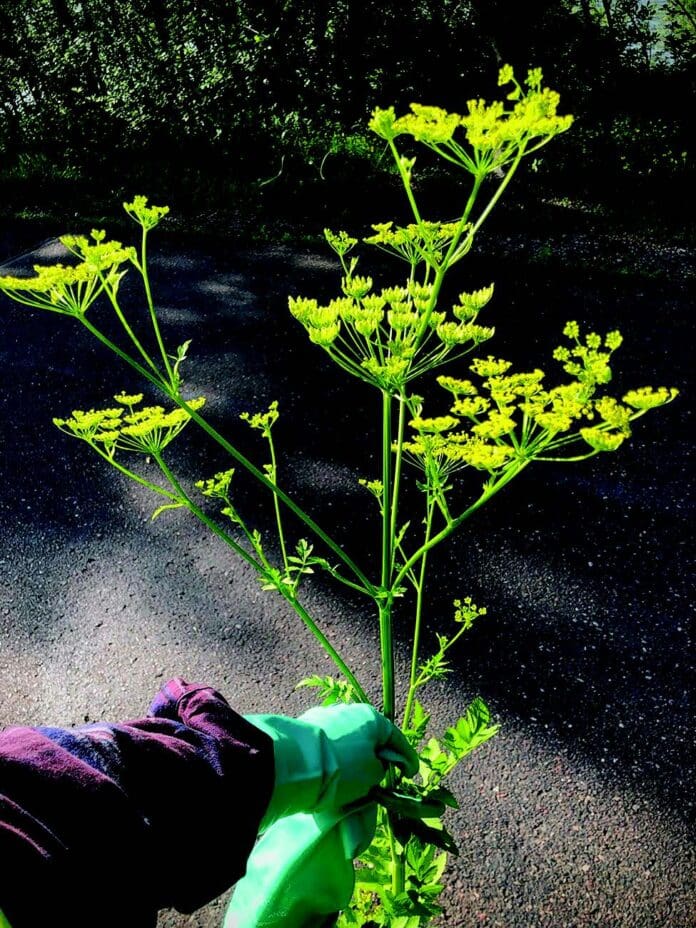Wild parsnip is one of the most troublesome of non-native plants found in northeastern Minnesota. If you touch it, you can get a painful rash. It can also injure light-skinned horses and cattle that contact it or eat hay that contains it. Wild parsnip (Pastinaca sativa) thrives in sunny areas like fields and along roads, trails, railroads, pipelines, and powerlines, but can also grow in moderate shade. It’s become much more abundant in our area in recent years.
The seeds germinate in spring and grow into non-flowering clusters of basal leaves (‘rosettes’) in the first summer. Rosette leaves become large and are divided into sharply-toothed leaflets. A rosette sends down a white carrot-shaped taproot. Once the taproot is big enough in the fall, the plant is ready to send up a flowering stem the next spring. Flowering may happen as early as the rosette’s second summer, or not until one or more years later. The flowering stems are deeply ribbed and can get about as tall as a person. In June and July wide flat umbels of numerous tiny yellow flowers emerge at the top of the stem. Each flower can produce two flat seeds that change from green to tan as they mature at ¼ inch across. As seeds ripen the whole plant begins to die, able to make seeds only once.
This invader looks a lot like the native plant Golden Alexander, which also grows in the same kinds of habitat and has an overlapping flowering season. If you want to control wild parsnip, you should learn to tell these species apart. You may have heard of cow parsnip, but that is a native plant with white flowers.
Wild parsnip seeds can germinate after lying dormant in soil for up to 3 or 4 years. Preventing seed production at a site until no more rosettes survive can achieve local eradication in about 5 years if new seeds don’t arrive from elsewhere. Mowing an infestation when seeds have already developed can spread the seeds to new places. Weed-whacking wild parsnip would spread the dangerous sap around. If you approach wild parsnip to control it, wear protective clothing and eyewear. Don’t touch it!
To learn more about recognizing and controlling wild parsnip, visit the Minnesota Department of Agriculture’s web page.



